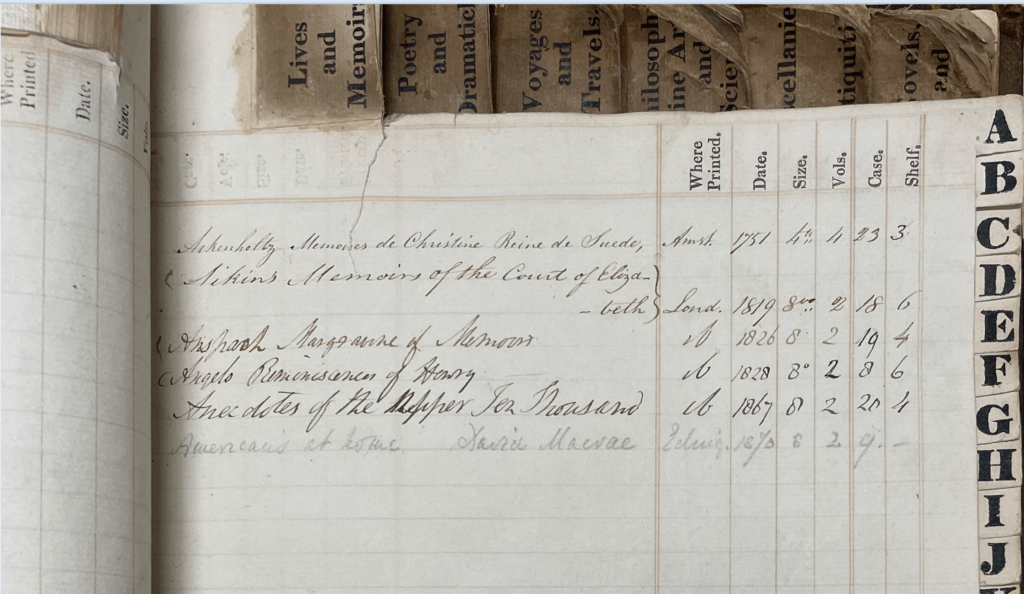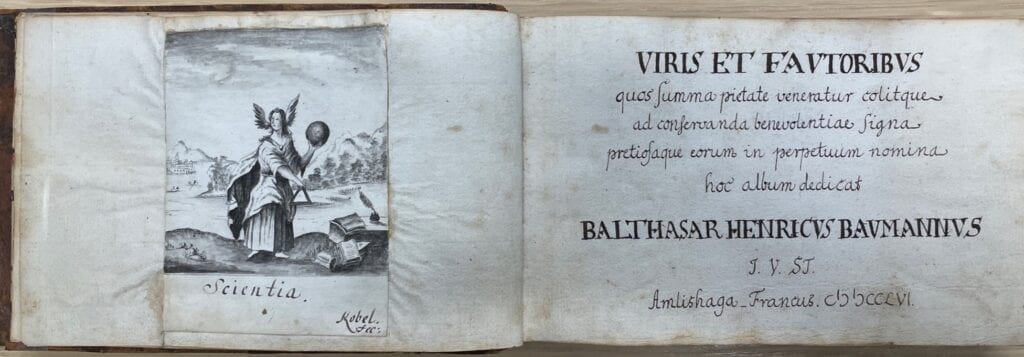Julie Park on Portable Devices, 1574-1998: Notebooks from NYU Special Collections
This post is written by Julie Park, Assistant Curator and Faculty Fellow in the Special Collections Center. The exhibition she curated, Portable Devices, 1574-1998: Notebooks from NYU Special Collections, on display April 14-June 21, is based on her current book project, Writing’s Maker, a study of the materiality of life writing in eighteenth-century England. The exhibition highlights the way blank books have for centuries served as critical devices for storing and managing personal and culturally meaningful information. Other curators in NYU Special Collections were invited to help tell this historical story of the notebook by contributing items from their specific collection areas, including Fales Library, University Archives, and the Tamiment Library and Robert F. Wagner Labor Archives. In this post, Park will introduce the overall exhibition and her individual exhibition, Paper Tools for Everyday Life, which provides the exhibition’s framework.
Blog posts by other curators on their individual exhibitions will follow: Janet Bunde, University Archivist, on Class and Lecture Notebooks from the New York University Archives,” Nicholas Martin, Curator for the Arts and Humanities, on Speculative Scrawl: Lists from the Downtown Collection and Metronome of a Life: Diaries from the Fales Library, Michael Koncewicz, Nash Research Scholar/Archivist and Ewen Center Coordinator, on Documenting the Antiwar Movement’s Radical Diplomacy: Howard Zinn’s Notebooks from North Vietnam, 1968-1972, and Shannon O’Neill, Curator for Tamiment-Wagner Collections, on The View from Here: The Affective Experience of Radical Politics in James Jackson’s Notebooks.
 IMAGE: Carton House Library Catalogue. Ireland, 1850.
IMAGE: Carton House Library Catalogue. Ireland, 1850.
Before the age of computers, how did people store and manage the information that was critical to the functioning of their own lives? Since the mid-1500s, the notebook in its guise as a bound book with blank pages has been a tool for organizing and storing information critical to the running of worlds, whether ones in domestic, social or educational settings, or those in political and institutional ones. As handwritten documents that might have accompanied their owners everywhere they went, notebooks are also ineluctable mirrors of the psyche.
Even as they serve as vehicles for organizing bits of information by providing the space for separating and dividing them, notebooks also allow disparate areas of life to mingle and merge. Intimate records of the notebook owner’s feelings and thoughts often appear alongside details related to the most prosaic and socially-oriented aspects of their lives. Featuring different examples of notebooks ranging from the limp vellum bound recipe book of a seventeenth-century English housewife to the pink notebook of a twentieth-century American diplomat for the antiwar movement, the items in this exhibition display the notebook’s different material forms as well as organizational schemes as a malleable and adaptable form of paper technology. The notebooks in this exhibition show the ways in which people turned the blank book into an enduring device for carrying out a range of activities, from learning, planning, negotiating, managing, cooking and remembering, to living itself.
Paper-Tools for Everyday Life
Different formats of blank books used for record keeping that were prevalent throughout eighteenth- and nineteenth-century Europe were the forerunners to the ways we might use not just spiral bound and Moleskine notebooks but also social media, databases and spreadsheets for keeping notes, preserving ideas and tracking data. These formats included commonplace books, friendship albums, pocket diaries, diaries, library catalogs, ship logs, and recipe books. Each reflects the notion of a notebook as a record-keeping system in book form and was accordingly designed to accommodate the nature of its contents. Together these different early blank book forms display the diversity of material and graphic means by which the notebook could be made to function as repositories of information critical to the management and memorialization of daily life, whether for self or institution.
Fundamental to the notebook’s function as a book-based record-keeping system is its provision of these blank spaces in which the notebook keeper has the freedom to make inscriptions of their own choosing, whether they are words, drawings or charts. Through making key graphic and conceptual decisions–how to divide blank spaces, assign places for specific categories of information, or fill in empty cells already created by a printing press–the notebook owner turned the book into a paper tool essential to living. Inside these paper tools, the most ephemeral but often critical facets of daily life, from daily expenditures and the expression of friendship to recipes and the weather, were captured, preserved, and found a home.
 IMAGE: Bavmannvs, Balthasar Henricvs. Viris et fautoribus. France, 1756.
IMAGE: Bavmannvs, Balthasar Henricvs. Viris et fautoribus. France, 1756.
Julie Park is a specialist in eighteenth-century English literature and material and visual culture. She is the author of The Self and It and the editor of several collections, including most recently, Getting Perspective, a special issue for Word and Image, as well as Organic Supplements, a volume published by the University of Virginia Press. Her recently completed monograph, My Dark Room, a history of the camera obscura and space of interiority in eighteenth-century England, will be published by the University of Chicago Press in 2023. In addition to Portable Devices, 1574-1998, she has curated a virtual exhibition The Interactive Book for NYU Libraries. Beginning in July 2022 she will be the Paterno Family Librarian for Literature (with tenure) and an affiliated member of the English department at Penn State University.